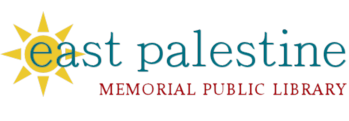The East Palestine Memorial Public Library was first opened in the Chamber of Commerce building on January 28, 1920, with 500 volumes under the sponsorship of the Chamber of Commerce. The Library was maintained on a basis whereby the books were contributed or secured through cash donations. The listing and issuance of books was performed entirely by volunteers, and the space for the Library was given without charge. In January 1934, a new state law became effective, making it possible for the Library to secure funds from intangible taxes on stocks and bonds enabling the Library to begin growth.
Until 1941, the Library had occupied numerous locations and the Board members, as well as others in the community; felt that the Library should have a place of its own. Money was tight in those war years and funds were needed to purchase property on which to construct a Library building. Trustee president John Bauknecht found twelve men with $100.00 each for the first lot. Thus began the long struggle for a permanent home for the Library.
When an adjacent lot became available in June 1953, for $9,000.00, President Bauknecht again contacted thirty local citizens each of whom donated $300.00 and the second lot was obtained.
The Board and Staff, after providing for operating expenses each year, had saved as much money as possible but fell short of the required funds to erect the building. A public solicitation of funds was conducted which yielded $18,265.48. This money, combined with the Library's savings and several gifts from local organizations totaled $77,695.94; the amount necessary for the front portion of the building and on July 30, 1953, construction finally began. The building was completed in 1954.
Before his death in 1946, R. Forbes Chamberlin, the first President of the Library Board, had drafted a will stating that upon the death of his sister-in-law Kathryn, a portion of his estate would go toward developing a park, providing that this money could be matched by the city. If this could not be done, the money would go into a Library Trust Fund to acquire a building or lot. A later codicil of the will specified that if the city already had a Library at the time of Kathryn's death, this money would be given to the United Presbyterian Church of East Palestine.
This second condition is most important, for when in 1955, the money became available, the city could not match the funds for the park and the Library had already been built and dedicated and thus the money went to the United Presbyterian Church of East Palestine. The matter was taken before Probate Judge Tobin, at which time the church representatives willingly requested that this portion be given to the Library to construct the rear section of the building. The $12,000.00 was matched by the Library Board and the second portion of the Library was constructed.
During the mid-1980s, the Library Trustees recognized that the Library building needed to be remodeled to provide handicapped accessibility and expanded to accommodate its increased services and materials. Through the years, frugal planning and spending had resulted in the growth of the building fund to over $350,000.00. Costs were expected to exceed this figure, however, so the possibility of obtaining a federal grant under the Library Services and Construction Act, Title II was investigated by the Trustees and the Librarian. In early 1990, the Trustees contracted with Michael Tabeling of Beck & Tabeling Architects, Inc. to help develop the building program and plans necessary to apply for the LSCA grant. After working with the Trustees, Librarian and Staff, Mr. Tabeling developed a plan to redesign and expand the Library and preserve its original exterior style.
The application for LSCA, Title II funding was submitted to the State Library of Ohio in August 1990. In December 1990, the Library was formally approved for one of only two grants available that year. This grant of $270,000 allowed the Trustees to proceed with a complete building program resulting in the current library building which was dedicated on September 27, 1992. This building allowed for future technology enhancement including the automation of its Circulation system and growth in materials and services including Internet access, and the addition of DVDs, audio books, music CDs, and eBooks.
